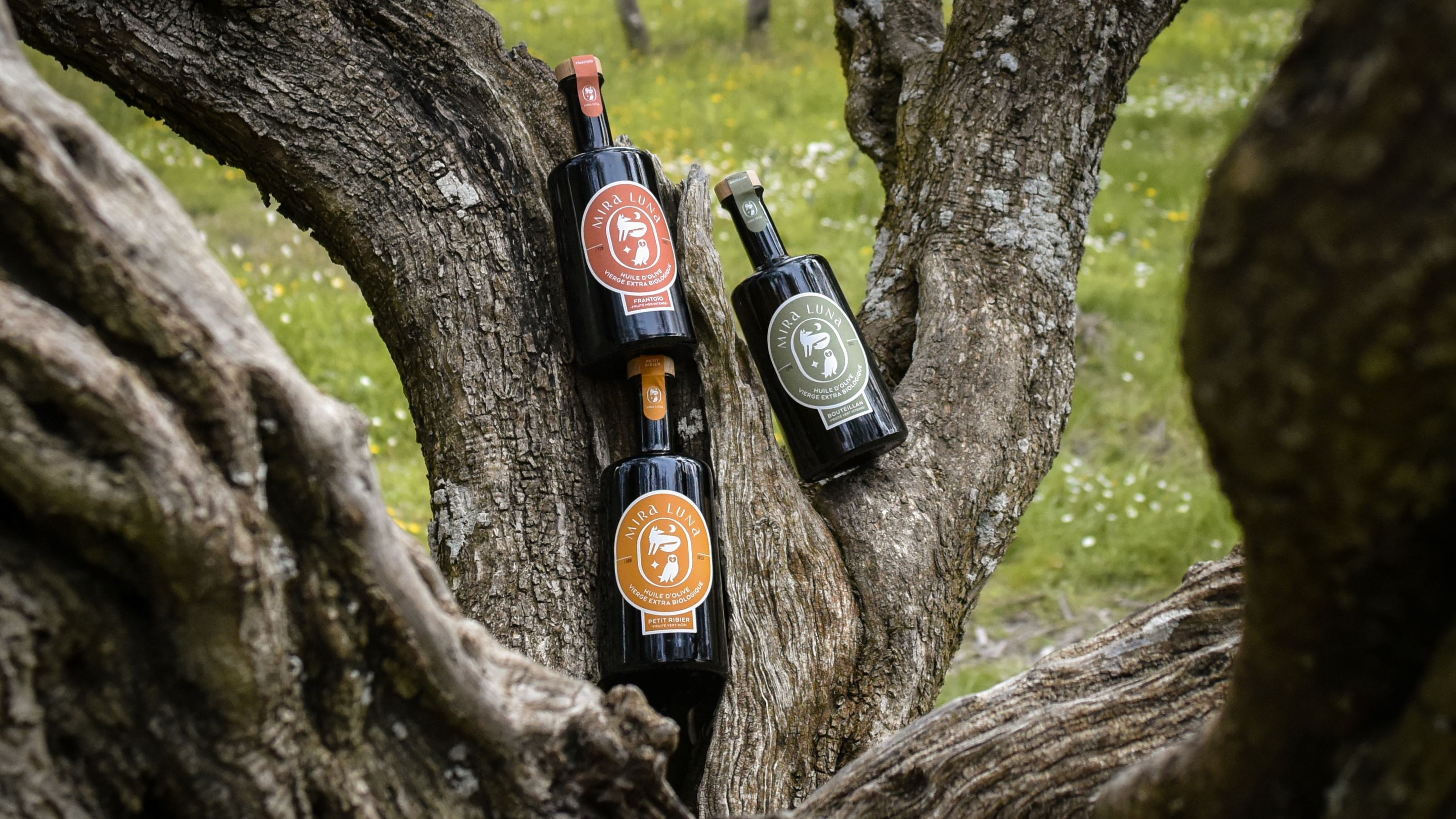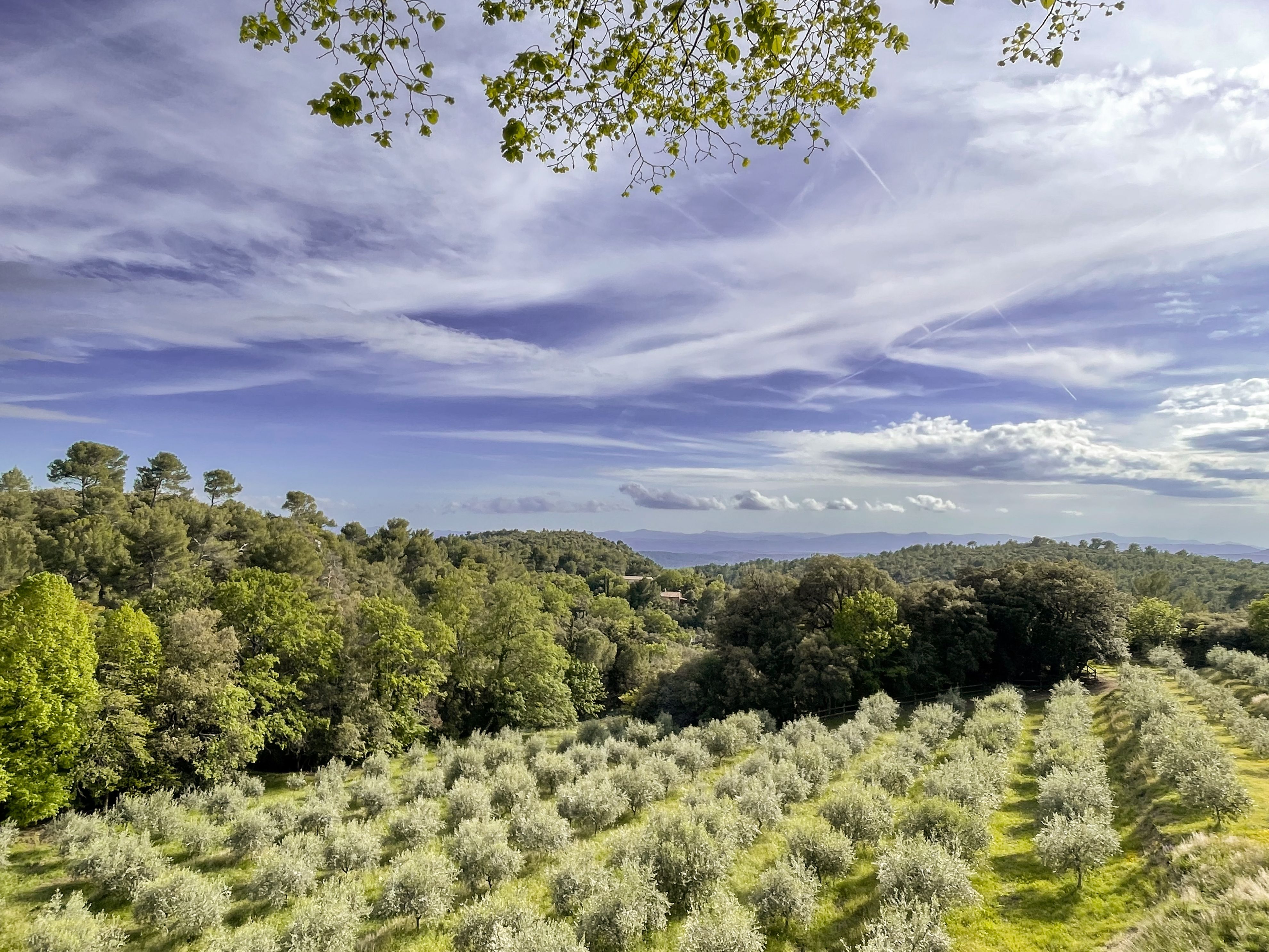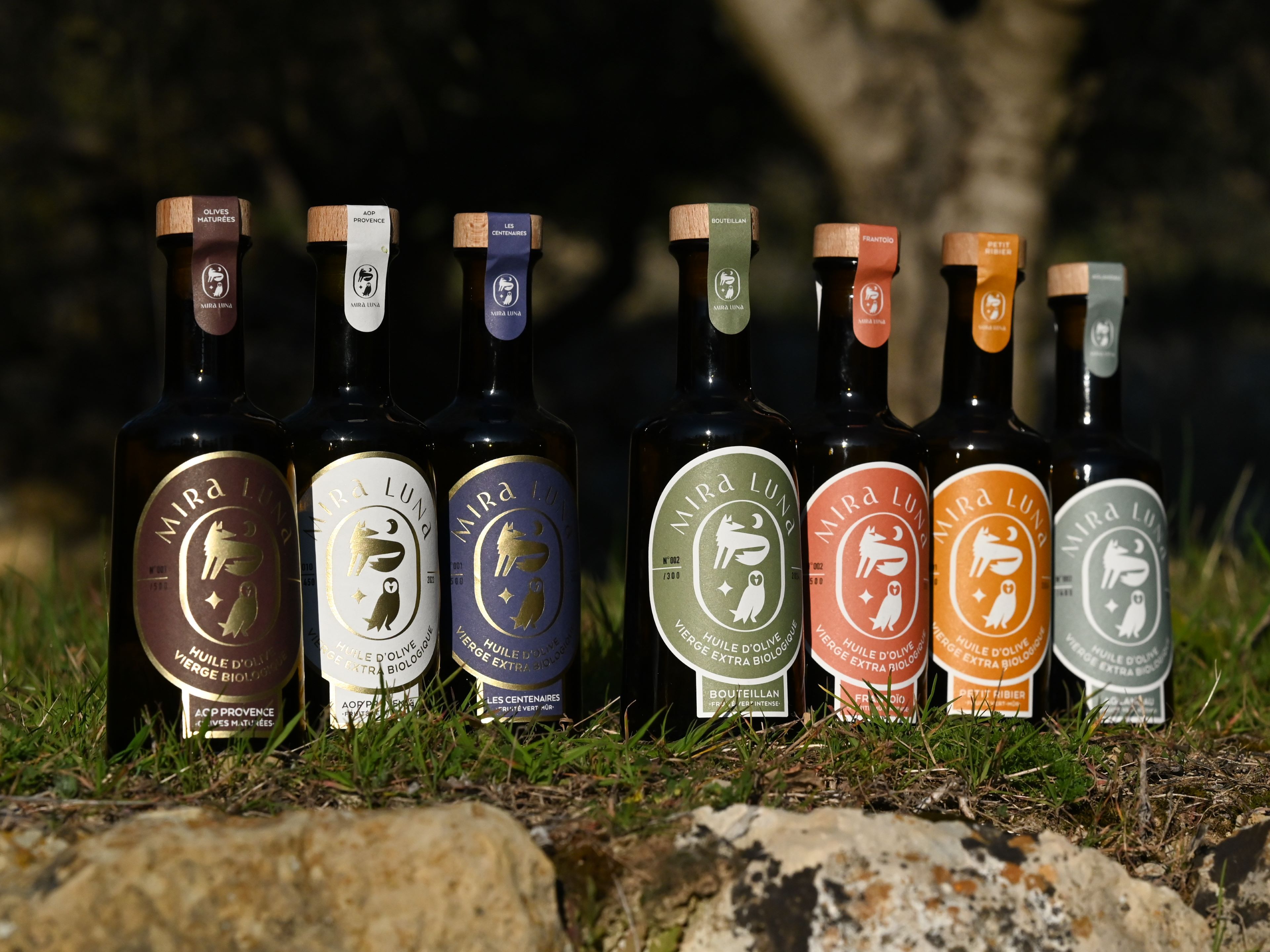Article
What are the best olive oils?
This guide to selecting the best olive oils will tell you all the criteria to consider when choosing the best olive oil for its quality and for your health.

Les critères qualité d'une huile d'olive
1. Choisissez une huile d'olive vierge extra
Choisir une huile d'olive vierge extra est la garantie d'une huile d'olive obtenue avec des olives saines par un procédé d'extraction mécanique, à froid, effectué rapidement après la récolte et en limitant tout risque d'oxydation.
Pour prétendre être vierge extra une huile d'olive doit répondre aux exigences suivantes :
- Indice d'acidité oléique < 0,8%
Cet indice mesure le taux d'acide gras libre présent dans l'huile d'olive ; il ne s'agit pas d'une acidité perçue gustativement mais une caractéristique qui reflète la qualité des olives qui ont été utilisées pour obtenir l'huile. En effet, plus les olives sont abîmées (chocs, attaque de parasites,...), plus l'huile obtenue sera dégradée et contiendra des acides gras libres. - Taux de peroxyde < 20 meqO2/kg
Cet indice mesure le degré d'oxydation cad le degré de rancissement initiale d'une huile d'olive, et ainsi donne une indication sur la détérioration que les antioxydants naturels ont pu subir. Cet indice mesure la qualité de la production de l'huile d'olive. Plus une huile d'olive a un taux de peroxyde haut, plus son goût et son odeur sont altérés (rance) et plus ses antioxydants bénéfiques pour la santé sont détruits.
L'oxydation est un processus naturel qui se produit au fil du temps et il peut être accéléré pendant l'obtention de l'huile (notamment si la température est trop haute ou le temps de broyage excessif), puis ultérieurement par les conditions de stockage de l'huile d'olive. - L'absorbance UV : K232 < 2.50 et K270 <0.22
Il s'agit des caractéristiques qui permettent de mesurer la fraîcheur de l'huile. K232 indique le respect d'un temps écoulé court entre la récolte et la trituration ainsi que le respect des conditions de stockage adéquates des olives (lumière, température, contact avec l'air, humidité). K270 détecte la formation de triènes, qui sont les témoins de l'âge de l'huile et qui peuvent compromettre le goût de l'huile. - Zéro défaut gustatif (rance, moisi, goût métallique...)
En plus des critères physico-chimiques ci-dessus, la réglementation impose un test de dégustation par un panel agréé d'experts pour vérifier l'absence de défaut gustatif pour pouvoir qualifier une huile d'olive comme étant "vierge extra".
Trop peu de marques et producteurs communiquent sur ces caractéristiques qui sont pourtant de très bons critères pour sélectionner les huiles d'olive les plus fraîches et qualitatives.
Pour prétendre faire partie des meilleures huiles d'olive vierges extra, l'indice d'acidité doit être égale ou inférieure à 0.25% et le taux de peroxyde égal ou inférieur à 8 meq O2/kg.
2. Choisissez une huile d'olive issue de l'agriculture biologique et d'une récolte manuelle des olives
La recherche de l'excellence pour l'obtention d'une huile d'olive vierge extra premium commence par une culture des oliviers respectueuse et soignée.
Dans le monde de l'huile d'olive, la qualité se marie rarement avec recherche de rendement haut et mécanisation. Un ramassage des olives à la main plutôt que l’utilisation de machines agricoles est un gage de qualité important : moins de traumatisme pour l’olivier qui ne ressort pas abîmé par le passage des machines, moins de dommages subis par les olives et possibilité d’un premier triage sur l’arbre des olives selon leur état et maturité.
La présence d'une certification "Agriculture Biologique" est indispensable. Cette certification vous garantit l’absence de traitement chimique des olives.
L’Agriculture Biologique a comme principe de ne pas forcer pas la nature, de la respecter et lui faire confiance. Cette agriculture privilégie la qualité, la saisonnalité et s'associe à des rendements faibles qui favorisent la concentration des arômes.

3. Choisissez une huile d'olive millésimée de l'année
Le temps est l'ennemi de l'huile d'olive car le phénomène d'oxydation altère progressivement sa qualité. Choisissez une huile dont vous connaissez la date d'obtention et de préférence de moins d'un an d'âge. Cette exigence vous garantira une huile fraîche, riche en arômes et en polyphénols.
4. L'importance du stockage et du conditionnement de l'huile d'olive
LE STOCKAGE DE L'HUILE D'OLIVE EN VRAC
Le stockage de l'huile d'olive en vrac chez le producteur ou la marque qui revend est très important.
Des études récentes effectuées par 60 millions de consommateurs montrent malheureusement que sur 24 bouteilles d'huile d'olive étudiées, 23 contenaient des résidus de plastifiants voire d'hydrocarbures.
Pour prévenir ce type de pollution, il est crucial de veiller à plusieurs critères :
- récolte manuelle des olives à l'aide de peignes et de filets posés au sol (éviter les bâches en plastique)
- stockage et transport des bacs d'olive à l'abri des échappements des tracteurs ou camionnettes
- délai le plus court possible entre la récolte des olives et leur arrivée au moulin
- trituration et centrifugation dans un moulin moderne entretenu et tout inox
- et surtout stockage du vrac d'huile d'olive dans des cuves et contenants exclusivement en inox
Seuls des producteurs très attentionnés et soucieux du détail peuvent garantir ces conditions de récolte, d'obtention et de stockage.
LE CONDITIONNEMENT DE L'HUILE D'OLIVE
L'oxydation est le processus naturel qui dégrade la qualité de l'huile d'olive au fil du temps.
Ce processus dépend de deux facteurs essentiels :
- la nature du packaging de l'huile d'olive
- les conditions de stockage de l'huile d'olive conditionnée
Des études ont montré que les bouteilles en verre teinté sont les packagings qui sont le plus efficaces pour freiner l'oxydation de l'huile. Les bouteilles en verre teinté sont significativement plus efficaces que les bouteilles en verre blanc, et sensiblement plus efficaces que les bidons en aluminium, pour protéger l'huile d'olive de l'oxydation.
Choisissez donc des huiles d'olive conditionnées en bouteilles en verre teinté.
Et mettez toutes les chances de votre côté en stockant vos bouteilles d'huile d'olive dans un endroit frais et sec.
5. Choisir la meilleure huile d'olive pour la santé
Pourquoi l'huile d'olive est-elle bonne pour la santé ?
En plus d'être une excellente source d'acides gras monoinsaturés oméga-9, c'est une huile végétale extrêmement riche en antioxydants, en particulier en polyphénols (tyrosol, hydroxytyrosol, et dérivés comme l'oleuropéine et l'oléocanthal).
Les polyphénols de l'huile d'olive sont connus pour leurs propriétés antioxydantes et anti-inflammatoires et ont un grand pouvoir contre le vieillissement cellulaire.
Selon de nombreuses études, la consommation régulière d'huile d'olive riche en polyphénols permettrait ainsi :
- une meilleure régulation du taux de cholestérol (moins de cholestérol LDL et plus de cholestérol HLD) et de la glycémie
- la prévention des maladies cardiovasculaires et des risques d'AVC
- la prévention des maladies dégénératives comme la maladie d'Alzheimer
- la diminution des douleurs inflammatoires (douleurs arthritiques, rhumatismes, règles douloureuses,...)
Si vous voulez la meilleure huile d'olive pour votre santé, choisissez une huile d'olive riche en polyphénols.
Quels facteurs influencent la teneur en polyphénols d'une huile d'olive ?
De nombreux facteurs influencent le taux de polyphénols d'une huile d'olive : les conditions climatiques, la variété et l'âge des oliviers, les pratiques agricoles et la maturité des olives lors de la récolte.
Par exemple, l'irrigation est une pratique qui diminue le taux de polyphénols de l'huile obtenue, surtout lorsqu'il est intense. De plus, les récoltes des olives pas encore mûres ou tout juste tournantes donnent des huiles à la teneur en polyphénols plus élevée. L'altitude est aussi un facteur favorable à la teneur en polyphénols.
Quelle est la teneur en polyphénols totaux d'une huile d'olive vierge extra ?
- Le taux de phénols totaux d'une huile d'olive varie entre 50 et 800 mg/kg.
- La plupart des huiles d'olive du marché se situent autour de 200 mg/kg
- Une huile d'olive de qualité premium a une teneur en polyphénols supérieure à 350 mg/kg.
- Une huile d'olive contenant plus de 650 mg/kg de polyphénols est exceptionnelle et très rare.
Une huile riche en polyphénols est-elle forcément amère et ardente ?
En règle générale, les huiles d'olive les plus riches en polyphénols sont celles qui sont très amères et très ardentes, en bref très "corsées".
Et pourtant, certaines huiles d'olive Mira Luna en sont le parfait contre-exemple : les huiles d'olive Mira Luna Les Centenaires et Petit Ribier ont des taux très élevés en polyphénols, bien supérieurs à 400 mg/kg, et sont pourtant d'une ardence et d'une amertume modérées.
C'est donc une erreur de corréler systématiquement l'amertume d'une huile d'olive à sa teneur en phénols.
La meilleure façon de choisir une huile d'olive riche en polyphénols est d'exiger son analyse et de vous assurer ainsi de sa teneur en polyphénols totaux.
Les huiles d'olive vierges extra Mira Luna

Les huiles d'olive Mira Luna répondent toutes aux critères suivants :
- Indice d'acidité <= 0.25%
- Taux de peroxyde <= 8 meqO2/kg
ce qui en fait des huiles d'olive vierges extra "premium".
Par ailleurs, elles sont issus d'oliviers cultivés en Agriculture Biologique, non irrigués et non traités.
Les olives sont récoltées manuellement et avec soin et sont triturés au moulin dans les heures qui suivent leur récolte.
Nos huiles d'olive sont filtrées sur papier et exclusivement stockées dans des bidons en inox. Elles sont de l'année et sont conditionnés au fur et à mesure des vente pour vous assurer une fraîcheur extrême.
Enfin, toutes les huiles d'olive Mira Luna contiennent plus de 500mg/kg de polyphénols, et même plus de 650 mg/kg pour les cuvées AOP Provence Fruité Vert et Petit Ribier, plus de 1000 mg/kg pour celle issue de nos oliviers centenaires et plus de 1100 mg/kg pour la cuvée Aglandau (du jamais vu !).
Le cas particulier de l'huile d'olives maturées
L'huile d'olives maturées est obtenue selon une recette traditionnelle provençale : une fermentation contrôlée des olives permettant d’obtenir une huile douce et onctueuse développant un fruité noir intense avec un goût d’olive noire confite et de tapenade sublimé de notes subtiles de cacao, de sous-bois, de pain toasté et de truffe.
Cette huile au goût à l'ancienne présente volontairement un goût dit "chômé", c'est pourquoi elle ne peut être qualifiée d'huile d'olive vierge extra. Elle est aussi moins riche en polyphénols puisque la fermentation que les olives ont subi induit une oxydation naturelle.
Cette huile d'olive se choisit pour le plaisir gustatif et les accords gourmets qu'elle offre, notamment avec les champignons, les pommes de terre et le chocolat.
C'est aussi une huile d'olive très douce et dénuée d'amertume, elle plaît à tous, et particulièrement aux enfants !